Proof of Keys- Steemit Crypto Academy- S4W7- Homework Post for @awesononso by @g0h4mroot.
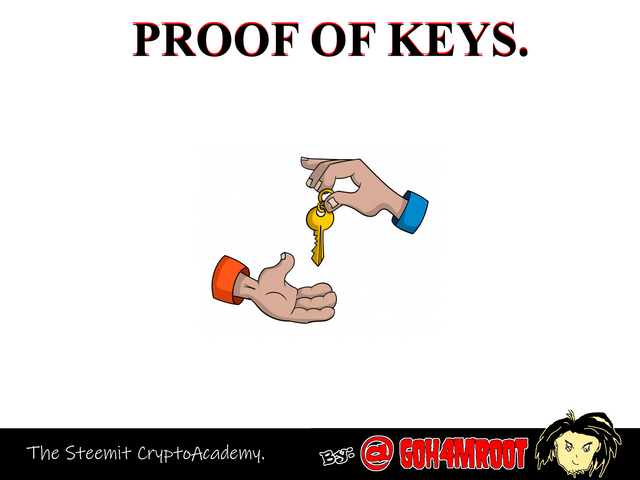

1.) Explain the public and private keys in relation to custodial and non-custodial wallets.

- The public key
This key is used by any user to encrypt a file, document or transaction sent.
in this case with the public key it encrypts or blocks the transactions so that nobody can access it, thus avoiding any intruder in the transaction.
- The private key
This key is unique and only belongs to the owner of the wallet, it must always be owned by a single person.
If it is a joint account, there will be 2 or more private keys, but there will always be one key per user.
With this key we can block or unblock funds from our wallet, this key is important since with it we can even migrate a wallet and add it to another or link it to another computer.
The public keys are similar between the 2 types of wallets, it does not matter if the wallet is custodial or non-custodial, outgoing transactions must always be signed and these transactions are encrypted using the public key so that it reaches its destination without interruptions.
The private keys between the 2 wallets are totally different:
In custody wallets we never have access to our private key or seed phrase, we only have a unique access key to the platform, this key is even stored in a database that is available to the custodian, even if we always change it in the custodian will know what the key is.
To make us believe that we have the total domain of the account, they provide us with authentication methods such as text messages, or the famous google authenticator and emails, but in the same way, being guarded by a third party, they can use our funds without our consent.
We can be banned for no reason and not receive a timely response and lose all our capital, these wallets are also affected by the regulations of some governments and countries, as there are laws that prohibit these exchanges and wallets.
In non-custodial wallets, the owner is the only one who has the initial key and the private key, but no one has access to this information.
the only existing problem is forgetting or losing these passwords because we can never recover them and all our money would be blocked until we remember where we put the keys.
In a non-custodial wallet we will never lose our tokens, the only thing that can happen is that the token disappears and our investment falls to $ 0, but the wallet will continue to show the amount of tokens we deposited at the beginning.

2.) What do you think about the Key Test Day? What precautions would you take when participating?

The key day of the test is a great idea, incentivizing beginners to learn how to use a decentralized exchange and decentralized wallet is essential for a user who is new to the world of cryptocurrencies.
Having control of our cryptocurrencies is the fundamental basis of every user.
The blockchain was designed and created to be decentralized,
otherwise, the source code would not be open source and would have been patented before the bitcoin manifest was published.
As a participant on the key day of the event, the first thing to do is:
1- Create a decentralized wallet, whether on paper, software, hardware, etc.
2- Keep the private key and the seed phrase very well, our funds depend on it.
It should be borne in mind that a centralized Exchange can declare bankruptcy as has happened previously, one of the most famous cases is that of ONE COIN that operated with its own exchange and that deceived many people.
I don't know if I'm wrong, but personally I would get my cryptocurrencies from a centralized exchange days before the key test day happened.
This also depends on the exchange you are using, but I would still know this as a precaution.

3.) Do you prefer centralized exchanges or decentralized wallets to store your cryptocurrencies? Why?

Since I started in the world of cryptocurrencies I have used centralized exchanges.
The reason is that I did not have a deep knowledge about the danger of these exchanges, for example if an exchange disappears our funds will also disappear.
From everything studied in this class, I have come to the conclusion that it is better to use DEX and decentralized wallets.
In decentralized and dex wallets we have the funds at our disposal at the desired time, although in a centralized exchange we assume that we have the funds available at any time, we also have to wait for confirmation by email, text message and confirmation from google. .
On a centralized exchange, the commission costs are higher and not everyone has the same variety of currencies as a multi-currency wallet.
Withdrawing our money from a centralized exchange is a bureaucratic protocol that takes time depending on various factors, sometimes if the exchange system fails, confirmation emails or messages are delayed.
In decentralized wallets there are no maximum daily withdrawal amounts, there are no records and there is no risk of loss of funds, the only way to lose funds in a decentralized wallet is to forget, lose or delete the seed key and the private key. .
In a centralized exchange we must have a record, we must verify ourselves, in order to carry out operations, most centralized exchanges have minimum and maximum withdrawal amounts and bureaucratic protocols, not to mention that it is prohibited for some countries.
"For all of the above, I prefer decentralized portfolios and skills."

4.) Suppose it is the day of the key test:

a.) Transfer at least 20 Steem from your Binance wallet to your Steemit wallet.

b.) Transfer at least 50 TRX from your Binance wallet to your TronLink wallet.
THE PROOF THAT YOU MAKE THE TRANSACTIONS.
SOURCE

5.) In a statement, what is the main importance of the transfers in question 4.

As the crypto professor explains, in this question we will emulate the key test day for an educational purpose to answer it.
The key test takes place on January 3 of each year in commemoration of the day of the creation of the genesis block.
The transfers made in question 4 have been made in order to demonstrate to new investors (us) that the coins and the wallet from which we make our transfer is a centralized wallet and therefore not everything really belongs to us.
if we analyze in depth, the transaction in binance:
1- we do not have a seed key or private key, we only receive a confirmation code by mail and text messages.
2- If we want to carry out a transaction, we must wait for the response from the Exchange, which in this case is the confirmation messages, emails and google codes,
Whereas in a decentralized Exchange we can have our private key, seed phrase and the funds that we can send them at any time without waiting for any confirmation from the DEX.
In this question, the main idea is to educate the student and I publicize him in general about the danger of keeping our capital in a wallet in which we do not have 100% of the domain.


The key test is a very interesting and important event, this day we commemorate the creation of the genesisblock and verify if the exchanges have the liquidity they claim to have.
encouraging participation on this day is a good task.
The people who start in this wonderful world as the blockchain, knowing about this day and the risks involved in using a centralized exchange is extremely necessary information.
In this evaluation we talked about the key test day and what to do that sia and how to prepare, we emulated a key test day and made some transfers from a centralized Exchange to decentralized wallets such as the steemit wallet and the tronkeywallet .
The transfers have been made aware of through own screenshots.
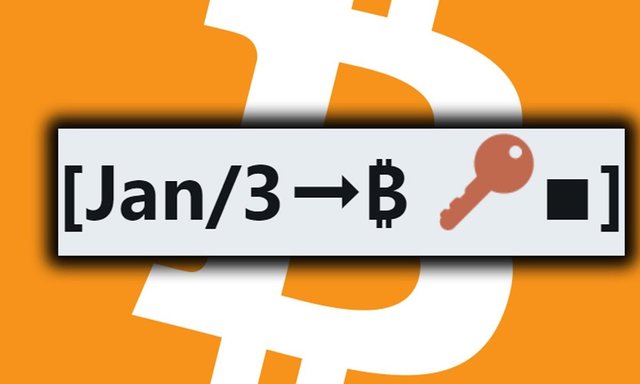
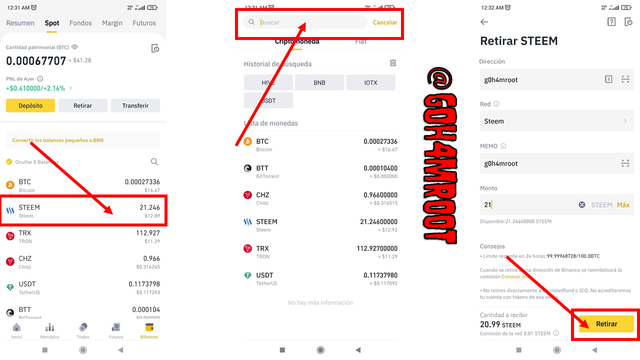
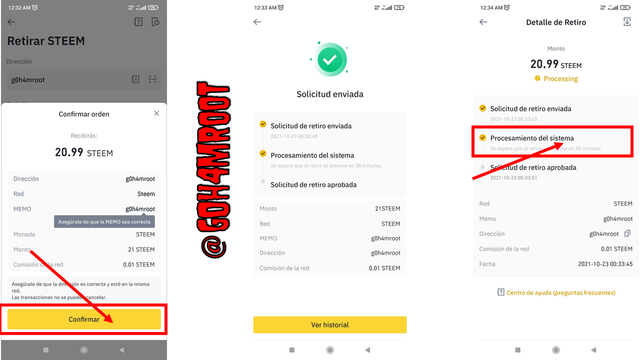
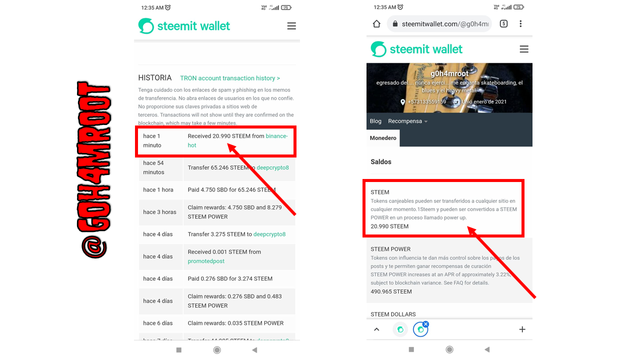
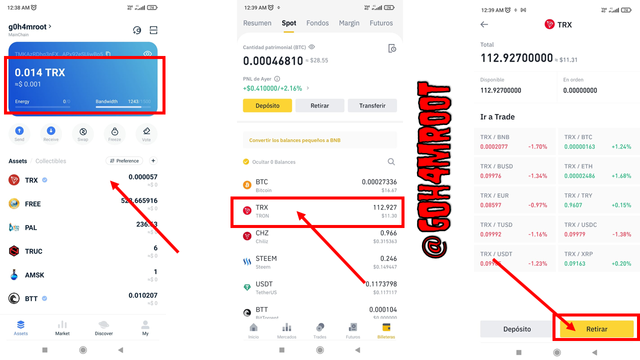
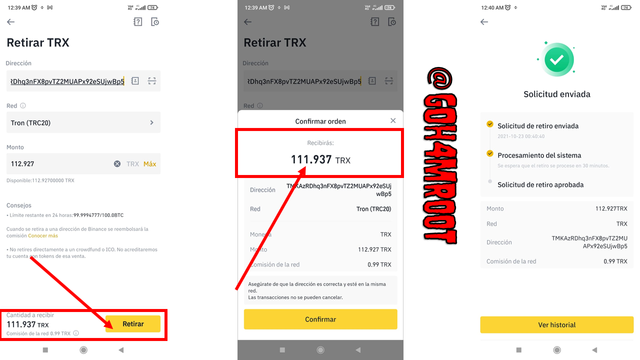
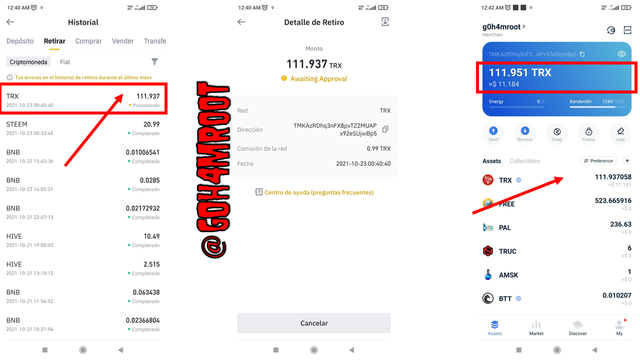
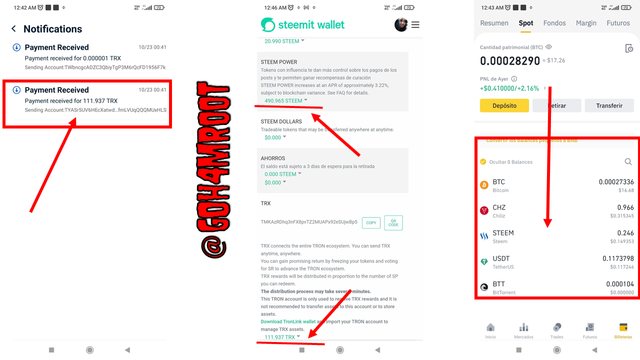
Hello @g0h4mroot,
Thank you for taking interest in this class. Your grades are as follows:
Feedback and Suggestions
Your explanation of private and public keys need work.
You should have done more in question 2.
You did not properly get the point in question 5.
Thanks again as we anticipate your participation in the next class.
Excuse me professor, could you explain the point of question 5, I would like to learn more about this! Thank you so much...